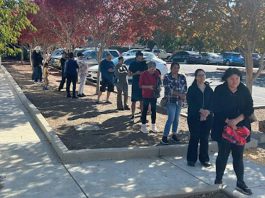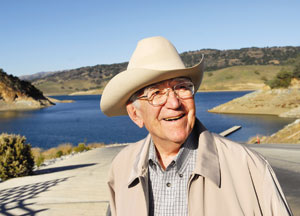Registrar installs ballot drop boxes in South County
Election Day is Nov. 3, but voters in Santa Clara County have already started casting and submitting their ballots, partly thanks to the installation of dozens of 24-hour drop boxes placed by election officials throughout the county.
Rene Spring: City Council District C Candidate Profile
Although Rene Spring thinks the top priority—perhaps for some time—going into the next Morgan Hill City Council term will be the Covid-19 pandemic, the District C incumbent still has some long-term goals if he wins re-election to his second term.
Juan Miguel Munoz Morris: City Council District C Candidate Profile
From an early age, Juan Miguel Munoz Morris saw firsthand the value of being civic-minded and helping others. His grandfather fought in World War Two and the Korean War, his grandmother was a social worker and his father was actively involved in local politics in Spain, as the country transitioned from a dictatorship to a democracy in the mid-1970s.
Julie Raia: City Council District A candidate profile
Julie Raia is running for Morgan Hill City Council District A in order to bring “some fresh perspective” to the city’s government.
South Valley celebrates ‘legend’ Sig Sanchez
Local and regional representatives and public officials held an early 100th birthday celebration last week for South Valley political icon, Gilroy Hall of Famer and longtime farmer Sig Sanchez.
Initiative would ban fulfillment centers from Morgan Hill
Proponents have begun collecting signatures for an initiative that would prohibit new fulfillment and modern-day distribution centers in the city limits of Morgan Hill, and require more intensive regulatory review of all large-scale development proposals.
CCW defendants seek to disqualify DA
Four defendants in an alleged CCW bribery scheme have filed a motion to take Santa Clara County District Attorney Jeff Rosen off the case.
Council may appoint mayor, city treasurer
With only a single candidate qualifying for each of Morgan Hill’s mayor and city treasurer races on the Nov. 3 ballot, the city council this week will consider appointing Rich Constantine and Caitlin Robinett Jachimowicz, respectively, to the posts.
Candidates qualify for Morgan Hill mayor, council, school board
The final list of candidates is in for the Nov. 3 election for mayor, two city council seats, city treasurer and three trustees’ seats on the Morgan Hill Unified School District.
Challengers pull papers for Mayoral, Council election
Morgan Hill’s mayor and two city council members will be challenged for their seats in the Nov. 3 election, as a total of eight candidates so far have expressed interest in running for the three local offices.













